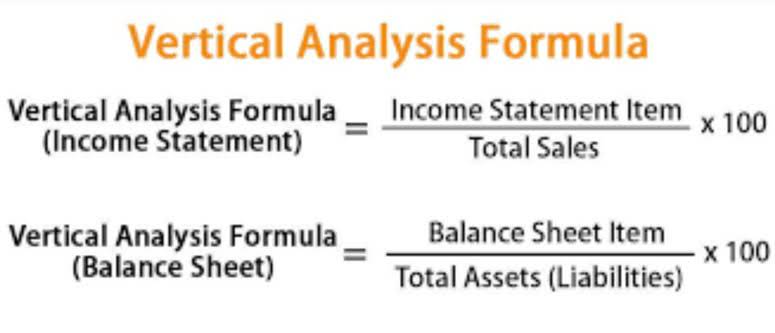Fund Accounting 101: The Basics and Best Practices

Net asset value is periodically calculated in conjunction with the provider of asset valuations and reported to investors as scheduled. Reporting on assets, income, expenses and investors is provided to management regularly, as established in the set up process, to support business strategy review, audits, regulatory filings and new investment sales planning. It is an essential tool for fund accounting meaning financial management and decision-making, enabling organizations to demonstrate responsible financial stewardship while effectively supporting their missions and objectives. As the fund proceeds through its life cycle, fund accounting sees to day-to-day maintenance of the investment portfolio, the flow of cash both in and out of the fund, investor relations needs and compliance matters.

As the wind down process progresses, fund accounting will evaluate whether the way the fund has been operating still makes sense. Is the expense structure still justified as the assets under management declines? Administration fees and charges from other vendors might now be excessive for the smaller and shrinking fund. Fund accounting will now begin assembling all the information necessary for the wind down of the fund and look closely at any potential sources of complication.
Nonprofit Accounting Terms
The IRS brings in revenue through taxes that it collects from both individual citizens and businesses. In accordance with the methods of fund accountancy the government is restricted to using tax revenue to pay for the general administration of the government and the services that it provides. When government expenditures exceed tax revenue in a fiscal year, a budget deficit is created.
- In summary, fund accounting plays a critical role in ensuring financial integrity, transparency, and compliance in government agencies.
- By utilizing this system of tracking funds, you can maintain accurate financial records for your organization and all of its directives, empowering you to generate powerful financial statements and make key decisions.
- Likewise, the amount paid for the electricity bill is recorded against the electricity expense account.
- Here, the main focus lies in accountability instead of profitability.
- Since nonprofit and government agencies do not base their financial success on profit, they need an alternative method of accounting to track finances – that method is fund accounting.
Net asset value or NAV is the company’s total asset value less its liabilities. Assets are what the fund owns and liabilities are what the fund owes. Fund accountants are responsible for timely and accurate execution and reporting of net asset valuations for the client’s accounts. Temporarily restricted funds are those funds that were received from the donor with certain restrictions that will be satisfied in the future. It is responsible for keeping a record of such funds and ensure that they are only being used once the restriction has been lifted.
Free Resources
Accounting for funds in this fashion allows you to answer these questions and more. In a properly set-up system, this fund would have its own asset, liability, equity, income, and expense balances, making it a completely separate entity within your organization. You would still be able to see simple information for your organization as a whole. By putting your accounting needs in the hands of fund accounting experts, your organization will ensure you meet all of the Generally Accepted Accounting Principles (GAAP) and FASB requirements.
It tracks the funds themselves – the money that comes into each fund and how the organization is using it. Restricted funds – Restricted funds are basically money given for a specific purpose. When it comes to spending restricted funds, it has some limitations.
Accounting for investments
Mutual funds have managers that manage the fund, which they charge a fee to investors for. Investors allocate money to mutual funds in hopes of increasing their wealth. Individuals, businesses, and governments all use funds to set aside money. Individuals might establish an emergency fund—also called a rainy-day fund—to pay for unforeseen expenses or a trust fund to set aside money for a specific person.
- Another issue is a budget’s proposed numbers aren’t backed up by any real transactions.
- Private equity fund accounting must be adjusted to clearly outline the financial situation and operation of the private equity fund.
- For example, the church could have other income like weddings where that money by passes the donation fund and goes directly into the church’s accounting books for the General fund.
- Fund accounting periodically calculates net asset value (NAV) conjunction with the provider of asset valuations and reports to investors as scheduled.
- Fund accounting is a way for nonprofits to stay in control of their finances and make sure they’re living up to the public’s expectations when it comes to handling money.
Additionally, fund accounting is the only way to show the church a consolidated financial statement for all funds. This type of report shows how the organization is doing financially overall. Nonprofits typically use three types of funds, with multiple revenue streams managed in each fund type. For instance, if your nonprofit has received three grants, each one of those grants will need to be recorded in the temporarily restricted fund account, since the grant has an expiration date (we’ll explain why later).
How Funds Work
By leveraging these tools, organizations can efficiently manage fund accounting, maintain transparency, and meet the specific financial reporting needs of multiple funds. Depending on the non-profit, a separate fund is typically established for each of the organization’s various programs as well as its overhead, general administrative, and fundraising activities. To track such revenues and expenses separately, the organization will set-up in the fund accounting system and assign to these transactions a unique fund code.
- The accounting fund has less money in it because money left the organization.
- It’s a way to track that nonprofits are being financially responsible and transparent.
- For example, in a church fund accounting chart of accounts, each fund has a numbered classification for easier categorization and decision-making.
- Mutual funds accept money from investors and use that money to invest in a variety of assets.
- This accounting system requires nonprofits to state how they have used resources in different projects.
- To this end, the treasurer’s understanding of fund accounting, is more on the technical and advisory side.
- The European Union (EU) announced on Monday that it would review whether it could continue to fund UNRWA in light of the allegations.
